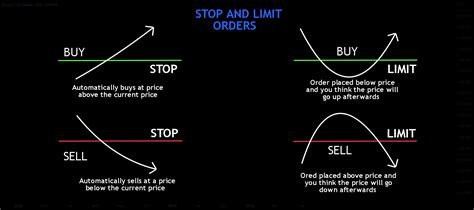Limit Orders Vs. Market Orders: Pros And Cons
Limit Orders vs. Market Orders: Understanding the Differences in Cryptocurrency Trading
The world of cryptocurrency trading has grown exponentially over the years, with numerous trading platforms and instruments available for investors to participate in. Two popular types of orders that traders use to buy or sell cryptocurrencies are Limit Orders and Market Orders. While both orders are essential tools for navigating the cryptocurrency market, they differ significantly in their characteristics and implications.
What is a Market Order?
A Market Order, also known as a “market” order, is an all-or-nothing type of order that specifies the price at which to buy or sell a currency. When placed with a market order, it will be executed immediately at that specified price without any conditions. For example, if a trader wants to buy 100 units of Bitcoin (BTC) at $10,000, they can place a market order to purchase as many units as possible at the current market price.
Pros and Cons of Market Orders:
Pros:
- Instant Execution: Market orders execute immediately at the specified price, allowing traders to take advantage of favorable market conditions quickly.
- Flexibility: Market orders are straightforward to place, making it easy for beginners to enter the market.
- Low Risk: Since market orders are executed at a fixed price, there’s no risk of getting stuck with unsold or overbought positions.
Cons:
- Limited Control

: With a market order, traders have limited control over their trades as they’re subject to market fluctuations and may not be able to adjust the price.
- No Fill Rate: Market orders typically don’t have a fill rate, which means that even if the market price moves in favor of the trader’s position, they might still be unable to buy or sell due to liquidity issues.
What is a Limit Order?
A Limit Order, also known as a “limit” order, specifies a specific price at which to buy or sell a currency. Unlike Market Orders, Limit Orders are not all-or-nothing and can be partially filled if the market price reaches the desired level before being executed.
There are two types of Limit Orders:
- Stop Loss Order
: A Stop Loss Order is used to limit potential losses by automatically selling at a set price (stop loss) when the trade falls below that price.
- Take Profit Order: A Take Profit Order is used to lock in profits by automatically selling at a set price (take profit) when the trade reaches that level.
Pros and Cons of Limit Orders:
Pros:
- Control and Flexibility: Limit orders allow traders to set specific prices, enabling them to control their trades and adjust to market conditions more easily.
- Fill Rate: Limit orders have a higher fill rate compared to Market Orders because they’re executed at the specified price, reducing the risk of unsold or overbought positions.
- Risk Management: Limit orders can help traders manage their risk by allowing them to set stop losses and take profits.
Cons:
- Delayed Execution: Since Limit Orders are not executed immediately, traders may experience delayed execution, which can result in missed opportunities.
- Increased Risk: Limit orders require traders to have a solid understanding of market conditions and be able to adjust their prices accordingly, increasing the risk of losses if market conditions change suddenly.
Conclusion
Cryptocurrency trading requires a deep understanding of both Market Orders and Limit Orders. While Market Orders offer instant execution and flexibility, they also come with limited control over trades and no fill rate. Limit Orders provide traders with more control and flexibility but require higher knowledge of market conditions and risk management strategies.

